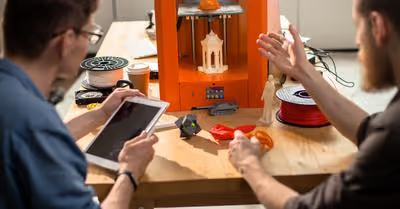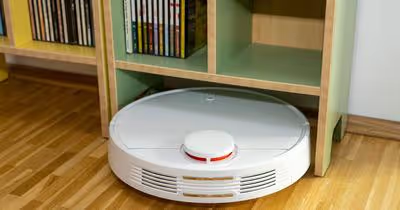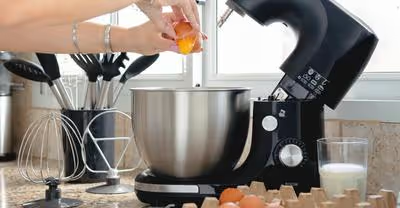Table of Contents
What Temperatures Can My GPU Handle?
When shopping for a new graphics processing unit (GPU), it is important to consider its temperature range. The temperature range is the measure of how much heat the GPU can withstand before it starts to experience thermal throttling. Thermal throttling is when the GPU slows down its clock speed in order to prevent overheating. This can cause the GPU to perform slower than its potential and may even lead to permanent damage. Therefore, it is important to choose a GPU with a temperature range that meets your needs.
Most GPUs on the market can operate safely at temperatures up to 85 degrees Celsius. However, some high-end GPUs can handle temperatures of up to 100 degrees Celsius. It is always best to consult your GPU's manufacturer to determine the safe operating temperature range for your specific model.
What Causes My GPU to Overheat?
There are a few different reasons why your GPU might overheat. Let's take a look at some of the most common causes:
Dust Buildup
One of the most common reasons for GPU overheating is dust buildup. Dust can enter your computer case through open vents and accumulate on components over time. When too much dust builds up, it can block airflow and cause your components to overheat. You can prevent dust buildup by regularly cleaning your computer case and using dust filters on open vents.
Overclocking
Another common cause of GPU overheating is overclocking. Overclocking is when you increase the clock speed of your GPU above its factory default settings in order to improve performance. While overclocking can give you a boost in performance, it also increases the amount of heat that your GPU produces. If you are going to overclock your GPU, be sure to do it carefully and monitor your temperatures closely.
Improper Cooling
If your GPU is not properly cooled, it will overheat. Ensure that you have adequate airflow in your computer case and that your cooling fans are working properly. You may also want to consider upgrading to a more powerful cooling system if you are having overheating issues.
Poor Ventilation
Poor ventilation can also lead to GPU overheating. If your computer case does not have adequate airflow, heat can build up inside and cause your components to overheat. Be sure to check that all of your vents are clear and unobstructed. You may also want to consider adding additional fans or upgrading to a larger case if you are having ventilation issues.
Dried-out Thermal Paste
Another potential cause of GPU overheating is old or dried-out thermal paste. Thermal paste is a substance that helps to conduct heat away from your GPU and into your heatsink. If the thermal paste between your GPU and heatsink dries out, it can lead to overheating. You can prevent this by regularly replacing your thermal paste.
Bad Power Supply Unit
A bad power supply unit (PSU) can also cause your GPU to overheat. The PSU provides power to all of the components in your computer. If it is not working properly, it can cause your components to overheat. Be sure to check that your PSU is working properly and providing enough power to all of your components.
Symptoms Of Overheated Graphic Card
There are a few different symptoms that you may notice if your GPU is overheating. These include:
Artifacts
Artifacts are visual defects that can appear on your screen. They are caused by overheating and can be either static or dynamic. Static artifacts are permanent and will not go away, while dynamic artifacts will come and go as the GPU heats up and cools down.
Driver Crashes
Another symptom of an overheated GPU is driver crashes. When the GPU gets too hot, it can cause the drivers to crash. This can lead to instability issues and may even prevent your computer from starting up properly.
Frame Drops & Stuttering
If your GPU is overheating, you may also notice frame drops and stuttering. This is because the GPU is not able to render frames as quickly when it is overheated. This can lead to a choppy or laggy gaming experience.
Fan Noise
You may also notice that your GPU's fan is making more noise than usual if it is overheating. This is because the fan is working harder to try and cool the GPU down.
How To Fix An Overheating GPU?
There are a few different ways that you can fix an overheating GPU. Let's take a look at some of the most common solutions:
Clean Your Computer Case
One of the best ways to prevent your GPU from overheating is to keep your computer case clean. Dust can accumulate on components over time and block airflow, so it's important to regularly clean your computer case and use dust filters on open vents. You can clean your computer case with compressed air or a vacuum cleaner.
Update Your Drivers
If you are having driver crashes, it's important to make sure that you have the latest drivers installed for your GPU. You can usually download the latest drivers from the manufacturer's website.
Monitor Your Temperatures
It's also important to keep an eye on your GPU temperatures and make sure that they are not getting too high. You can use a program like MSI Afterburner to monitor your GPU temperature in real-time. If you notice that your GPU temperature is reaching 90°C or higher, be sure to take action to cool it down.
Replace Thermal Paste
If you think that your thermal paste may be dried out, you can replace it with fresh thermal paste. This will help to conduct heat away from your GPU and into your heatsink.
Upgrade Your Cooling
If you are still having overheating issues, you may need to upgrade your cooling. This can involve adding additional fans or even upgrading to a liquid cooling system. You should also consider upgrading to a larger case if you are having ventilation issues.
Underclock Your GPU
Many gamers choose to overclock their GPUs in order to boost performance. However, there are also benefits to underclocking your GPU. Underclocking can extend the life of your GPU by reducing stress on the components. It can also help to improve stability, particularly if you are experiencing crashes or overheating.
Here are a few simple steps to follow:
- Download and install a GPU overclocking utility, such as MSI Afterburner.
- Open the utility and navigate to the "Core Clock" or "GPU Clock" settings.
- Reduce the clock speed by around 10-20%.
- Save the new settings and restart your computer.
- Test the new settings to ensure that they are stable.
- If they are not, increase the clock speed slightly and test again. Repeat this process until you find a stable setting.
Inspect Hardware For Damage
If you are still having issues with your GPU, it's possible that there is physical damage to the hardware. You should inspect your GPU for any signs of physical damage, such as bent pins or burnt-out components. If you find any damage, you will need to replace the damaged component.
Recent Articles

















